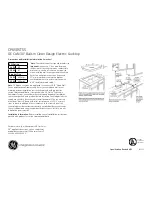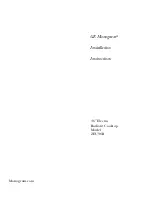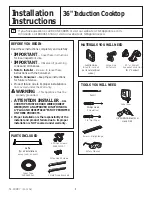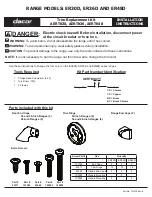
12
After a
relatively long
permanent
operating
time, the
heating
switches off
and on within
minutes
•
Coil overheated,
cooking area too
hot
•
Empty pan
•
Pan with
overheated oil
•
Switch cooker off,
remove pan and wait
until the cooking area
has cooled off
Small metallic
objects (e.g.
spoon) are
heated up
within the
cooking area
•
Pan detection
tuned incorrectly
Trouble Shooting
Before cleaning, the Cooking plate must be allowed to cool to room
temperature.
•
Cooking plate: The cleaning of the cooking plate is identical to
that for other similar glass surfaces. Do not use corrosive or
abrasive cleaning agents, such as grill and oven sprays, stain
and rust removers, scouring powder and rough sponges. Clean
the Cooking plate with a wet towel. A little mild soap can be
used before wiping.
•
To clean Ventilation slots use an old tooth brush.
DO NOT
use
WATER to splash on and get into the ventilation slots. Such
water seepage will cause damage.
•
For any other maintenance and servicing work not described
here, they should be done by an authorized service personnel.
13
Any other servicing should be performed by an authorized
service representative.
Always keep the Cooking plate surface clean of food and other
liquids by using a soft damp cloth. Allow to dry before storage.
Regular cleaning, care and servicing of your Induction cooker will
ensure you have good performance at all times.
This device complies with Part 18 of the FCC Rules
Warning: Changes or modifications to this unit not
expressly approved by the party responsible for
compliance could void the user's authority to operate
the equipment.
NOTE: This equipment has been tested and found to
comply with the limits for a Class B ISM equipment,
pursuant to Part 18 of the FCC Rules. These limits are
designed to provide reasonable protection against
harmful interference in a residential installation. This
equipment generates, uses, and can radiate radio
frequency energy and, if not installed and used in
accordance with the instructions, may cause harmful
interference to radio communications. However, there
is no guarantee that interference will not occur in a
particular installation. If this equipment does cause
harmful interference to radio or television reception,
which can be determined by turning the equipment off
and on, the user is encouraged to try to correct the
interference by one or more of the following measures:
- Reorient or relocate the receiving antenna.
- Increase the separation between the equipment
and receiver.


























